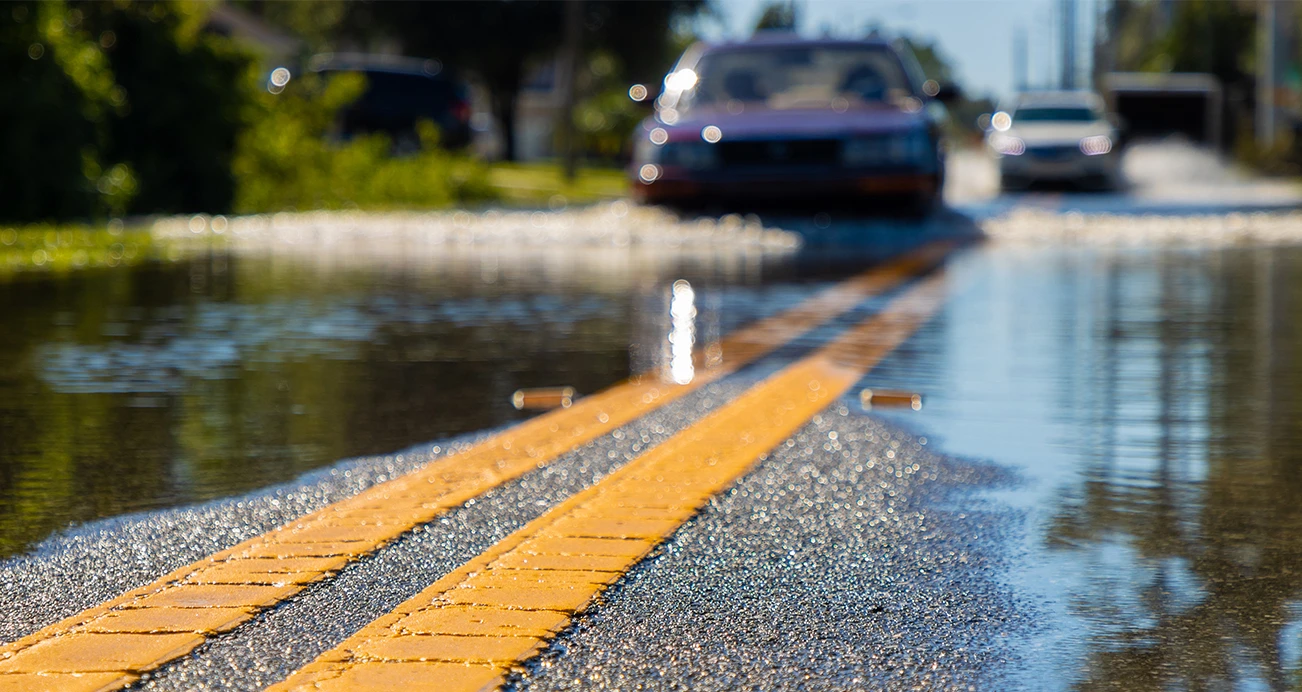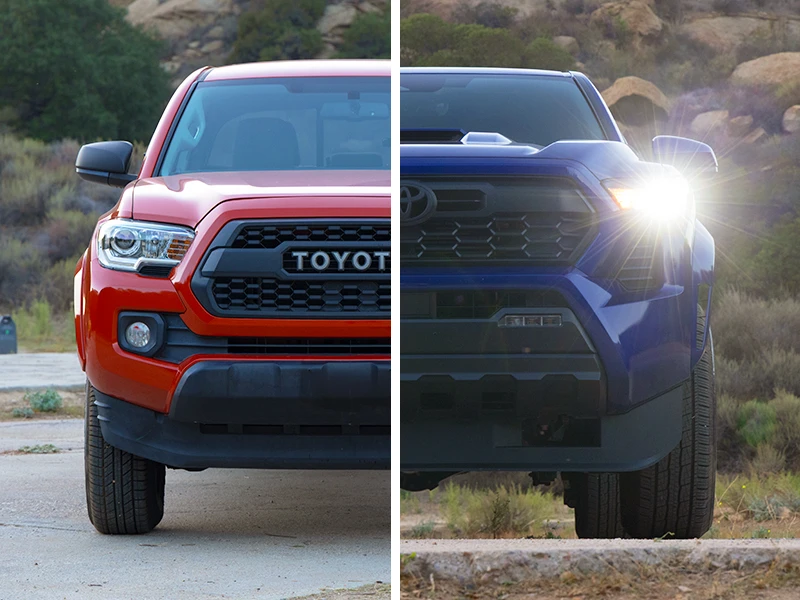
Spot and avoid flood-damaged cars.
With big storms like hurricanes and other natural disasters, it's important to be aware of potential flood-damaged vehicles when buying a used car. Flood damaged cars can be a headache to deal with, having long-lasting effects on a vehicle's performance, safety, and value. Knowing what to look out for and avoid is so important.
Whether you live in a flood-prone area or want to avoid hidden issues in your next car, this article gives advice on how to spot flood-damaged cars to help you confidently choose your next new-to-you ride.
What is flood damage?

Flood damage happens when a vehicle is exposed to a significant amount of water, whether through heavy rainfall, hurricanes, storm surges, or other water-related incidents. When a vehicle becomes partially or fully submerged, water can infiltrate different parts of the car, such as doors, windows, vents, sunroofs, seals, and cracks, leading to lasting damage. Once inside, the water can affect critical systems, including the engine, transmission, electrics, brakes, and interior components.
Prolonged exposure to water can also lead to corrosion, rust, mold growth, and issues with the wiring system, electronics, and mechanical parts. The severity of the damage depends on a couple of factors, such as the depth of water, duration of exposure, and type of water. For example, freshwater from lakes, rivers, or heavy rainfall will cause damage to a car's electrical and mechanical systems, but saltwater is very corrosive and can also wreak havoc on metal components like the engine, transmission, and frame.
Are flood-damaged cars more common in certain areas of the US?
Flood-damaged cars tend to be more common in regions with hurricanes, heavy rainfall, or coastal and river flooding. In some cases where a federal disaster area is designated, insurance companies or vehicle history report providers may flag vehicles that are registered in federal disaster zones.
What happens to flooded cars?
Flood-damaged cars—especially ones with severe flooding—may be declared a total loss by insurance companies because they are expensive and hard to restore. When an insured vehicle is declared a total loss, the owner is usually paid the car's current value minus any deductibles, the insurance company takes possession of the car, and it is issued a salvage, salvage-flood, or total loss title and re-sold.
A salvage title warns potential buyers that the car has significant damage and is unsuitable to drive. Flood damage is just one instance where a car may receive a salvage title. Other instances include a major accident, smoke or hail damage, theft, other natural disasters and more.
If you are considering buying a vehicle with a salvage title or end up purchasing one unknowingly, it could be challenging to insure and may need substantial work to be re-titled and registered. Even after a salvage vehicle is repaired, there are still ways to identify the history. Often, they will be required to have a salvage-rebuilt title post-repair and the salvage history should still be on state title histories or vehicle history reports.
A VIN check alone doesn't provide detailed information, so CarMax includes a vehicle history report before purchase. Always review a vehicle history report prepared by a third party, such as AutoCheck, on any used car you buy to know what you're getting yourself into.
How to identify flood damage
Wondering how to tell if a car has been flooded? Here are five key steps to help you spot the signs of a flood-damaged vehicle.
Note: Vehicles with flood damage will typically have several red flags related to these key points. Just one may be an indication of other issues unrelated to flood damage.
1. Visual inspection
Make sure to check for any water lines, stains, or mud in the vehicle's interior—that includes carpets, seats, and even the trunk.
Keep an eye out for things like brand-new carpets and upholstery, as this could mean water damage repairs were done.
Inspect the headlights, taillights, and other external lights for any signs of water accumulation if no obvious cracks are present.
Look at the console, seats' anchor points, bolts, and screws for any rust or corrosion.
Pay attention to the air vents and dashboard—check for any water residue or stains.
Look for dirt or sand in hidden areas, like under the dashboard or floormats.
Search for any watermarks on the vehicle's exterior, especially behind panels.
2. Odor detection
Pay attention to musty or moldy smells, which can signify water damage or hidden moisture.
Test the air conditioning and heating system for unusual odors that may indicate the car was once flooded.
3. Mechanical assessment
Test anything electrical like power windows, mirrors, air conditioning, audio systems, and more to make sure they work.
Listen for any unusual noises from the engine since water exposure can cause internal damage.
Check the engine oil and transmission fluid dipstick for a milky or light brown color, which may indicate the car has flood damage or unrelated internal engine problems.
Inspect the air filter. If the cardboard frame is soggy or has water damage, it might mean the vehicle was submerged.
4. Undercarriage inspection
Look for rust or water accumulation around the gas and brake pedals, as these areas are prone to damage in flooded vehicles.
Inspect the rubber drain plugs on the bottom of the doors and under the car. If it looks like they were recently removed, it could mean that water was drained from the vehicle.
Check the spare tire well. Even if the car doesn't have a spare tire, it's common for water to collect there.
5. Documentation and vehicle history
Get a comprehensive third-party vehicle history report. This may uncover if there are any reported any past incidents, repairs, or other information related to flood damage, such as a salvage title. The National Insurance Crime Bureau offers a free VINCheck that shows whether a vehicle has ever been reported as a salvage vehicle by participating NICB member insurance companies.
If possible, contact the vehicle's previous owner to find additional information about its history and potential water exposure.
Identifying flood-damaged cars is necessary when buying a used vehicle, whether you live in a flood-prone area or want to avoid costly surprises down the road. By understanding what to look for when purchasing a preowned car, you can protect yourself (and your wallet) from potential headaches and unwanted expenses. Most importantly, you'll find a new-to-you ride that meets your needs and ensures a positive ownership experience.
Want to learn more? Check out these related used car articles from CarMax:
CarMax does not sell vehicles with reported flood damage history. Our inspection process is designed to identify flood damaged vehicles and exclude them from retail sale.




